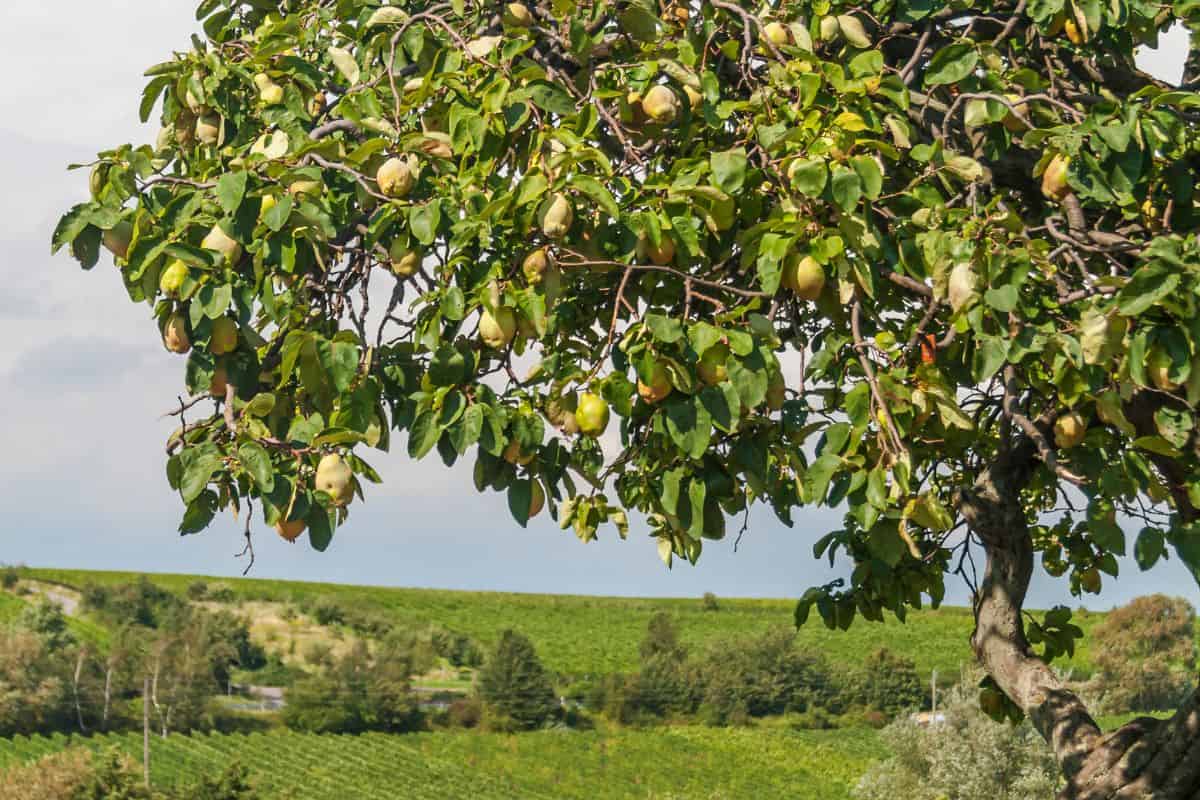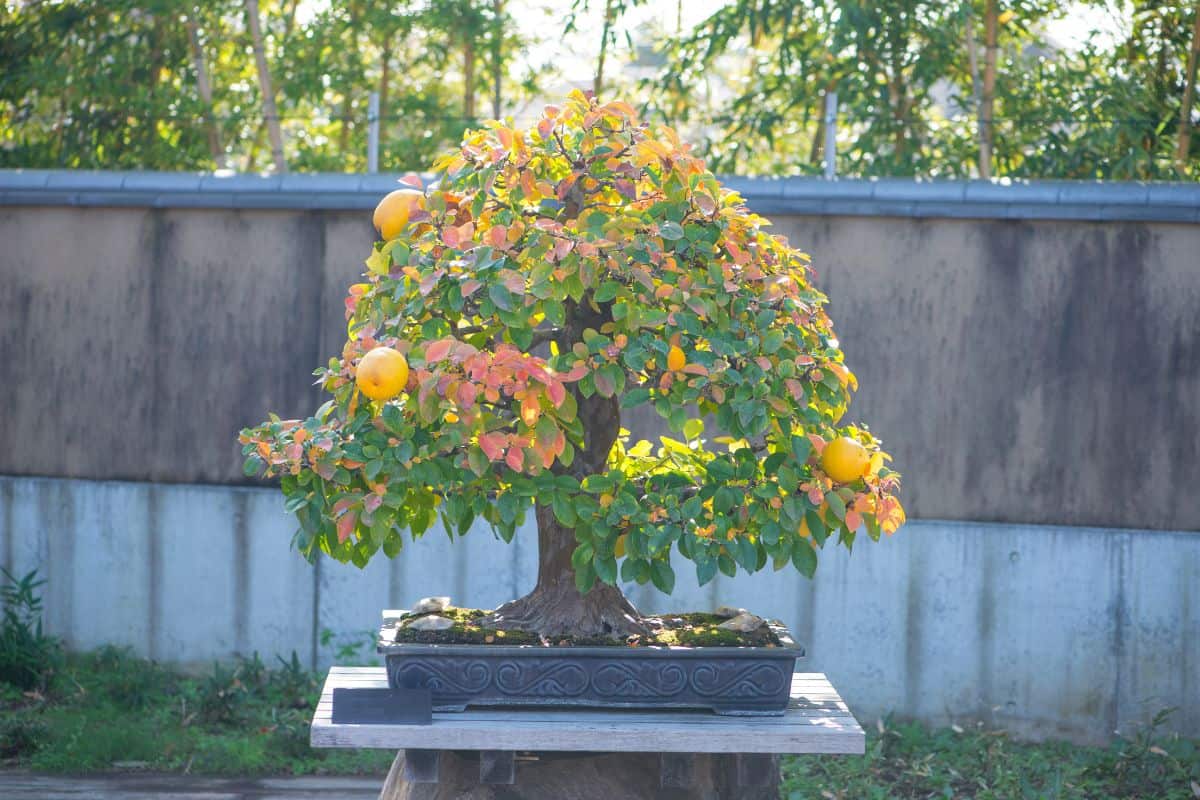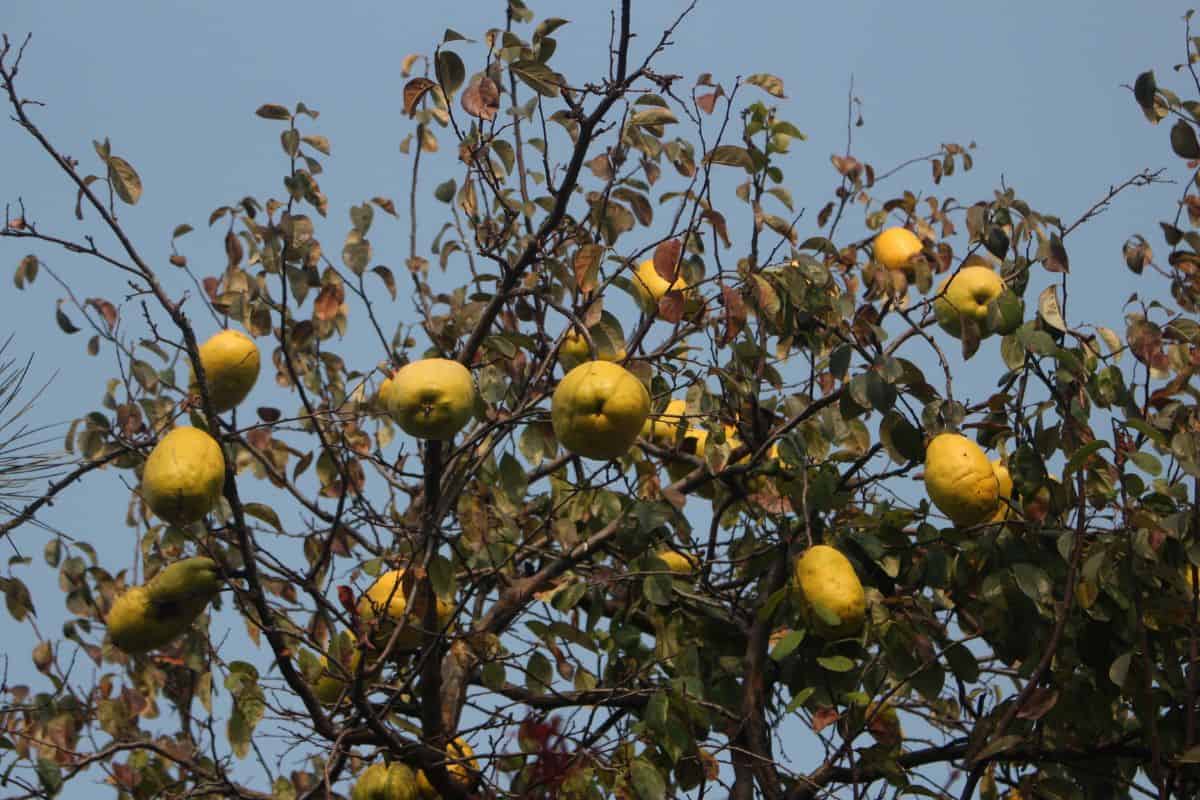Quince trees are known for their fragrant blossoms and delicious fruits, but many gardeners wonder how big they will get. In this article, we explore the factors that influence the size of a quince tree and offer tips on how to manage its growth.
Quince trees typically grow to be 10–26 feet tall and 8–20 feet wide. The tree's size can vary depending on the specific cultivar, growing conditions, and pruning practices.
Discover more about Quince trees beyond just their average size! Join us as we explore the factors that affect their growth and find out how long it takes for these magnificent trees to mature.

Factors Impacting A Quince Tree's Size
Are you ready to uncover the secrets behind the size of a Quince tree (Cydonia oblonga)? Brace yourself because it's not just genetics that determines their growth!
Soil quality, climate, and even pruning techniques can all play a considerable role in shaping the size of these trees.

While they're typically small to medium in size, don't be fooled—the variability in these factors means that Quince trees can come in many shapes and sizes. So, let's dive in and explore the fascinating world of Quince tree growth.
Genetics
Genetics is a crucial factor in determining the size of a Quince tree, as different cultivars can have vastly different growth habits and sizes.
For instance, the 'Pineapple' cultivar of Quince tree is known for its large size, often growing up to 25 feet tall and 20 feet wide. Compared to the 'Smyrna' cultivar which tends to produce smaller trees, typically growing up to 15 feet tall and 10 feet wide.
Other cultivars, such as 'Champion' and 'Orange', fall somewhere in between these extremes in terms of size.
Soil Quality
Quince tree size is affected by soil quality, which should be well-draining, rich in organic matter, and have a pH of 6.0-7.0. Soil that is too acidic or alkaline can stunt growth by inhibiting nutrient uptake, ultimately reducing the size of the tree.
Additionally, Quince trees are susceptible to certain soil-borne diseases like root rot and crown rot. These conditions can further impact their growth and size.
These diseases can be more prevalent in poorly draining soils that retain too much moisture. Ensuring that the soil is well-draining is crucial for preventing them.
Growers can take steps to improve soil quality and optimize growth by adding organic matter to the soil. Examples of organic matter include compost or well-rotted manure.
Climate
Quince trees are typically hardy trees that are well-suited to growing in temperate climates.
They are adapted to a range of environmental conditions, but their growth and size can be impacted by changes in temperature and humidity.
In general, quince trees prefer mild temperatures and moderate humidity. They can tolerate some variation in temperature, but extreme heat or cold can be damaging to the tree.
During periods of high heat, the tree may become stressed and struggle to grow, resulting in stunted growth and smaller fruit. In areas with cold winters, the tree may become dormant and stop growing, resulting in a smaller overall size.
Pruning
Pruning is a critical practice for maintaining the growth and size of a Quince tree. By selectively removing older or diseased branches, pruning stimulates the growth of new, healthier branches that can produce more fruit.
In addition, pruning can control the size of the tree by removing excess growth and redirecting growth to where it is needed.
By opening up the canopy, pruning also improves airflow and increases sunlight penetration to lower branches and fruit. This results in larger and more flavorful fruit.
Learn more: Where Do You Cut When Pruning A Plant? [And At What Angle?]
How Do I Keep My Quince Tree Small?
There are a few techniques you can use to keep your quince tree small. One of the most effective methods is pruning.
You should aim to prune your quince tree during the winter when the tree is dormant. This will help to promote new growth in the spring and prevent the tree from becoming too large.
Another technique you can use is training. By training your quince tree, you can direct its growth in a specific direction and prevent it from becoming too tall or wide.
You can use stakes or wires to guide the branches of your quince tree in the desired direction.

You can also limit the size of your quince tree by controlling the amount of fertilizer and water it receives. Over-fertilizing or over-watering your tree can lead to excessive growth, so it's important to be mindful of how much you are giving it.
Finally, you can consider planting your quince tree in a container. By planting your tree in a container, you can control its growth by limiting the amount of soil and nutrients it has access to.
This will help to keep the tree small and manageable while still allowing it to produce fruit.
How Long Does It Take A Quince Tree To Grow?
The length of time it takes for a Quince tree to grow and produce fruit depends on several factors. Quince trees typically take three to five years to bear fruit after they have been planted.
However, the specific length of time can vary based on the type of Quince tree, growing conditions, and the age of the tree when planted.
Quince trees grown from seeds take longer to bear fruit than those grown from cuttings or grafted onto rootstock.
Trees grown from seeds may take up to 10 years to produce fruit, while grafted trees can start producing fruit in as little as three years.
Growing conditions also play a significant role in the growth rate of quince trees. These trees prefer full sun, well-drained soil, and moderate water. In wet, or shady areas, the tree may take longer to produce fruit.
How Deep Do Quince Tree Roots Grow?
Quince trees have a deep and extensive root system that is essential for their survival and growth. The depth of quince tree roots can vary depending on the growth factors we went over.
In general, younger trees tend to have shallower roots that spread horizontally. Older trees develop deeper roots that can reach up to 10–15 feet deep.
In well-drained soils, the roots of the quince tree can penetrate deep into the ground, whereas with trees in heavy clay soils, the roots are more likely to grow horizontally near the surface.

Additionally, the presence of other trees or plants nearby can also affect the depth and spread of quince tree roots.
The extensive root system of quince trees helps them to absorb water and nutrients from the soil that are essential for growth.
However, the deep roots of quince trees can also make them difficult to transplant once they are established. Therefore, it is important to choose the right location for planting a quince tree.
Read more: 15 Fruit Trees With Non-Invasive Roots
Are Quince Trees Easy To Grow?
Quince trees can be relatively easy to grow with the appropriate conditions and care. They are hardy trees that can tolerate a range of soil types and growing conditions.
Quince trees grow best in well-drained soil that is slightly acidic. Quince trees also prefer full sun, but they can tolerate partial shade.
When planting a quince tree, it is essential to select a site that is sheltered from strong winds and has good air circulation.
Quince trees need to be watered regularly during the growing season, particularly during hot and dry periods. Fertilizing the tree once a year with a balanced fertilizer can also help promote healthy growth.

One potential challenge with growing quince trees is that they can be susceptible to a range of pests and diseases.
To prevent this, it is important to keep the area around the tree free of weeds and debris and to prune the tree regularly to maintain its shape and promote good airflow.
Overall, while there may be some challenges in growing quince trees, with proper care and attention, they can be a rewarding and relatively easy addition to your garden or orchard.
In Closing
Quince trees have a maximum size of 26 feet tall and 20 feet wide. However, there is a lot of variety among individual trees. We hope you found this article helpful when caring for a Quince tree of your own.
Are you searching for more ideas regarding fruit trees? Read more here:
